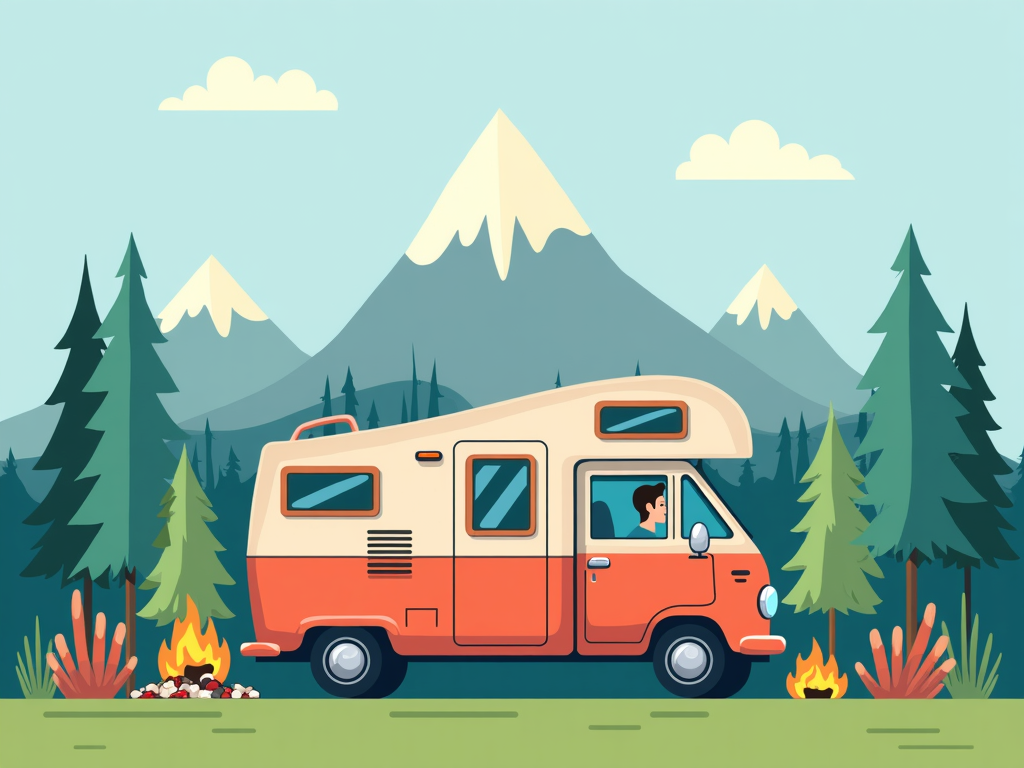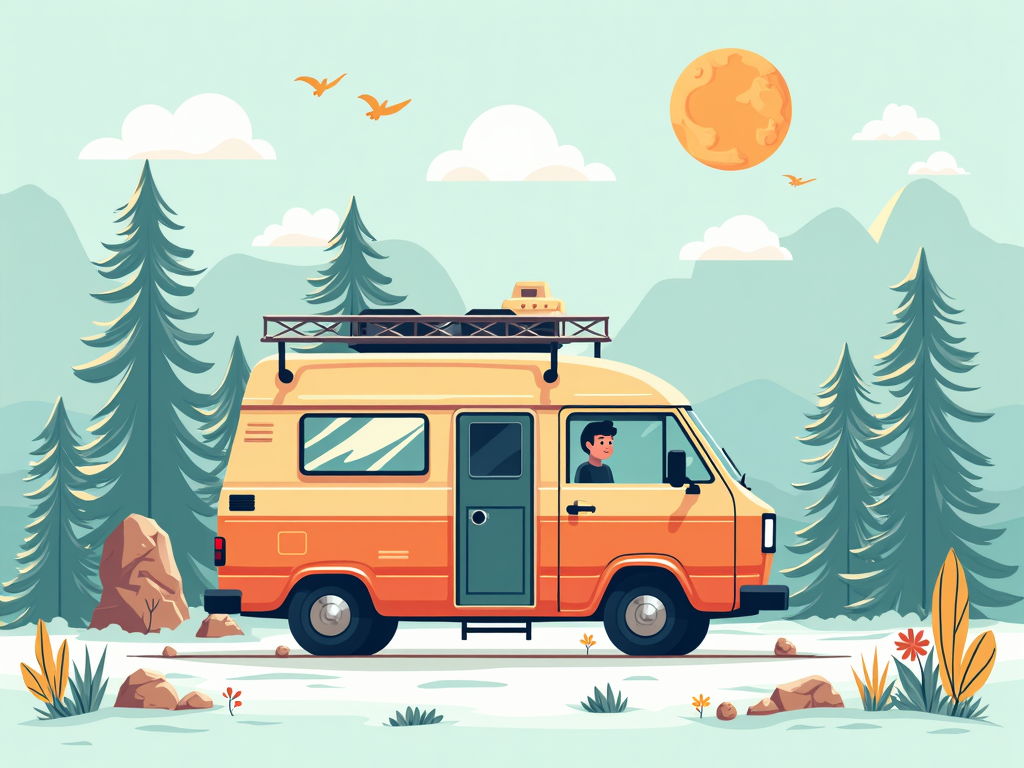Let me guess. You’ve been told real camping means suffering. Sleeping on rocks, eating cold beans, and pretending you’re enjoying yourself while secretly counting the hours until you can get home to your actual bed.
Here’s the thing—that whole ‘roughing it’ mentality? It’s complete BS. And it’s keeping millions of people from experiencing nature.

RV rentals are up 10% this year. Know why? Because people finally realized camping doesn’t have to suck.
The outdoor industry is having a massive identity crisis right now, and comfort is winning. Big time.
We’re living through a legitimate revolution where car camping has gone from ‘cheating’ to the smartest way to actually enjoy the outdoors. And if you’re still clinging to the idea that discomfort equals authenticity, you’re missing out on the best camping experiences of your life.
The Death of ‘Roughing It’: How Comfort Became the New Currency in Car Camping
Here’s what nobody talks about. The whole ‘suffering in nature’ thing? It was invented by gear companies to sell you expensive ultralight equipment.
Think about it. Our ancestors didn’t rough it—they made themselves comfortable wherever they went. They built shelters, made fires, created communities. Comfort was survival.
Somewhere along the line, outdoor culture got hijacked by this weird masochism. Like you’re not a ‘real’ camper unless you’re miserable.
Meanwhile, RV rentals jumped 10 percentage points from last year. Glamping is a billion-dollar industry. Hybrid campgrounds near cities are booked solid.
You know what that tells me? People want nature. They just don’t want to pretend sleeping on the ground is fun.
The comfort revolution isn’t about being soft. It’s about accessibility. My 72-year-old dad can camp now because of memory foam mattresses and portable power stations. My friend with a bad back doesn’t have to miss family trips. Kids actually want to go camping when they’re not freezing their butts off.
This isn’t dumbing down camping. It’s opening it up.
Coleman gets this. REI gets this. Even the hardcore overlanding community gets this—comfort means you can stay out longer, go further, actually enjoy where you are instead of enduring it.
The old guard can keep their suffering Olympics. The rest of us? We’re out here with our battery-powered fans and camp chairs that don’t destroy our spines, actually present in nature instead of counting down to checkout time.

So what does this comfort-first approach actually look like in practice?
The Ultimate Comfort-First Vehicle Camping Setup: Essential Gear That Changes Everything
Forget everything you think you know about camping gear. The game has completely changed.
Last week, I watched a family pull into a KOA with what looked like a mobile apartment. Rooftop tent from Thule popped in 90 seconds. Yeti power station running their coffee maker. Air mattress thicker than my bed at home.
They were set up and relaxing while the ‘real campers’ next door were still untangling guy lines.
Here’s your new reality: comfort gear is affordable and transformative.
Start with sleep—because everything sucks when you’re tired. Those $40 Coleman air mattresses? They’re basically miracles. Add a memory foam topper from Target. Done. You’re sleeping better than most hotels. That’s car camping for beginners 101 right there.
Power changes everything. A basic Jackery or Goal Zero station runs about $300. Worth every penny. Run fans, charge everything, power real lights. No more headlamp dinners feeling like you’re performing surgery. These auto camping power solutions literally transform your experience.
Speaking of dinner—portable induction cooktops are game changers. Faster than camp stoves, safer, and you can actually control the heat. Pair it with a collapsible sink setup and you’ve got a real kitchen. Your auto camping food ideas just expanded exponentially.
Climate control isn’t luxury anymore. Battery-powered fans for summer, portable propane heaters for cold nights. The new Mr. Heater Buddy series are safe for enclosed spaces. No more pretending you’re warm in your sleeping bag.
Storage is where people mess up. Milk crates, over. Get actual drawer systems from Yakima or even just clear storage bins with labels. The time you save not digging through bags? That’s time actually enjoying your trip. Smart car camping storage tips make or break your experience.
Don’t overthink this. Pick one system—sleep, power, or kitchen—and make it amazing. Everything else can wait.
Now that you’ve got the gear sorted, where do you actually go?
Beyond KOA: Finding and Creating Comfort-Focused Camping Experiences
The camping world has split into two camps. There’s the traditional ‘pack it in, pack it out’ crowd. And there’s everyone else who discovered Hipcamp.
If you haven’t used Hipcamp yet, you’re camping in the stone age. It’s like Airbnb for camping, and their comfort filters are revolutionary. Hot showers? Filtered. Electrical hookups? Sorted. Actual toilets? You got it. These are the best auto camping sites nobody’s talking about.
But here’s the insider move—hybrid campgrounds. These spots near urban areas are exploding because they get it. You can hike all day then hit a brewery for dinner. State Parks are catching on too, adding comfort amenities without losing the nature vibe.
Even BLM land—the last frontier of ‘rough’ camping—has spots with surprising comfort if you know where to look.
The real secret? Turn any basic site into luxury camping.
First, pick your spot strategically. Flat ground near the bathrooms but not too close. Morning shade, afternoon sun. Water access without the bugs. Basic auto camping safety tips that actually matter.
Then transform it. Outdoor rugs define your space. String lights create ambiance and actual visibility. A proper camp kitchen setup makes you the hero of the campground. Pop-up canopies give you a living room. Suddenly your basic site feels like a backcountry resort.
National Parks get it wrong sometimes—too many restrictions. But places like Patagonia’s new conservation sites? They’re designing for comfort from day one.
The future of camping isn’t either/or. It’s both/and. Nature and comfort. Adventure and accessibility.
Ready to actually make this happen?
Look, the outdoor gatekeepers can keep their suffering. The rest of us have figured out something better.
Camping isn’t about proving how tough you are. It’s about being in nature, making memories, and actually enjoying yourself.
The comfort revolution isn’t killing camping—it’s saving it. More people, more ages, more abilities can now experience the outdoors. That family with the rooftop tent and power station? They’re doing it right.
Your next trip doesn’t have to be an endurance test. Pick one comfort upgrade. Just one. Maybe it’s a real mattress. Maybe it’s a power station. Maybe it’s just booking a site with actual showers.
Whatever gets you out there.
Because here’s the truth—the best camping trip is the one you actually take. And if comfort gets you outside more often? That’s not cheating.
That’s winning.